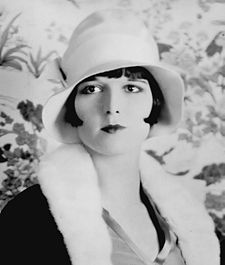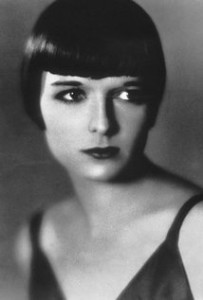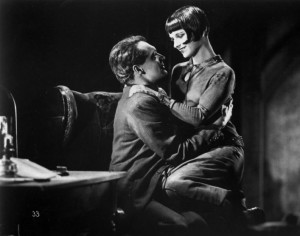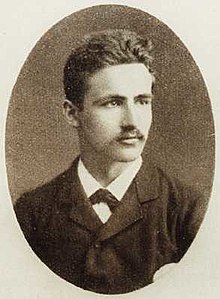Pandora’s Box [Die Büchse der Pandora] ***** (1929, Louise Brooks, Fritz Kortner, Franz Lederer, Gustav Diessl, Alice Roberts, Sigfried Arno) – Classic Movie Review 3805

The now legendary Louise Brooks thrillingly stars as the fatal charmer Lulu in Austrian director Georg Wilhelm Pabst’s dazzling, erotic 1929 German silent melodrama film adaptation of Frank Wedekind’s theatre plays Erdgeist (Earth Spirit, 1895) and Die Büchse der Pandora (Pandora’s Box, 1904).
You simply cannot take your eyes of the magnetic 22-year-old Brooks, who gives a great, entrancing silent movie performance, innocently projecting the promiscuous sexuality that, in the story, leads everyone to their doom. As we are told by the prosecutor in the trial scene, the title refers to Pandora in Greek mythology, who opens a box given to her by the gods and releases all evils into the world. Supposedly hope is left, but there isn’t much in this story.
[Spoiler alert] Lulu is infamous in Weimar Germany as the sexually provocative femme fatale, a young dancer and adventuress of mysterious origin who stirs the blood of both a father, the rich financier Dr Ludwig Schön (Fritz Kortner), and his son Alwa (Franz [Francis] Lederer), before she is tried for a killing and flees the law to London and tragically ends up in the clutches of Jack the Ripper (Gustav Diessl).
Pabst’s movie was not a hit in its day, receiving adverse reviews, but since its re-discovery by critics in the 1950s, it has long been deservedly heralded and lauded, and it is now properly celebrated as one of the masterpieces of silent cinema and one of Weimar Germany’s classics, thanks mainly to Brooks’s magnetic performance and Pabst’s striking, often astonishing German Expressionist film-making style, relishing an enjoyment of weird compositions, odd angles and extreme close-ups.
The startling, sophisticated, modern-feeling film is notable for its strong lesbian subplot, with Belgian actress Alice Roberts playing Countess Augusta Geschwitz, a woman with a masculine look and wearing a tuxedo, who dances with, is attracted to, and eventually helps Lulu with both her money and her passport. Roberts is excellent, making a striking figure and a strong impression. Apparently, Roberts resisted the idea of playing a lesbian but ironically she is best remembered for playing the character. She died on 29 October 1985, aged 79.
Other key characters are played Carl Goetz as the disreputable-looking Schigolch, who may be Lulu’s father, Krafft-Raschig as trapeze act Rodrigo Quast and Michael von Newlinsky as the blackmailing Marquis Casti-Piani, though it has to be said that these characters, as played, are more exaggerated and less appealing than others in the film.
Also in the cast are Daisy D’Ora as as Charlotte Marie Adelaide von Zarnikow, the Minister of the Interior’s daughter Schön Sr plans to marry, and Sig Arno [Sigfried Arno] as the Stage Manager.
No original negative or print survives. Much-cut or censorship edited versions (at 97 minutes and 110 minutes) circulated until the print was finally restored from dupes in 1983 at 133 minutes, with a new score by Timothy Bock. There is also a copy with French titles at Brussels Musée du Cinéma at
Pandora’s Box was released in a two-disc DVD set on 28 November 2006 by the Criterion Collection with a choice of four soundtracks: an approximation of the score cinema audiences might have heard with a live orchestra, a Weimar Republic-era cabaret score, a modern orchestral interpretation, and an improvisational piano score.
It is written by G W Pabst (uncredited), Ladislaus Vajda [Laszlo Wajda] (scenario) and Joseph Fleisler (titles), shot in black and white by Günther Krampf and produced by Heinz Landsmann and Seymour Nebenzal, with Art Direction by Andrej Andrejew, Gottlieb Hesch and Ernö Metzner.
Brooks (1906–1985) retired in 1938 but returned to popularity in the Seventies and Eighties, and enjoyed attending re-releases of her films in crowded revival cinemas. She published her memoirs Lulu in Hollywood in 1982 and died of a heart attack at the age of 78 on August 8, 1985.
Wedekind’s Lulu plays also formed the basis for Alban Berg’s masterpiece opera Lulu (1937). Pandora’s Box was previously adapted for the screen by Arzén von Cserépy in 1921 in Germany, with Asta Nielsen as Lulu.
Pabst chose Brooks after seeing her as a circus performer in the 1928 Howard Hawks film A Girl in Every Port but his offer to hire her was not even made known to Brooks by her studio Paramount. Pabst’s second choice star Marlene Dietrich was his office, waiting to sign a contract to do the film, when he got word of Brooks’s availability after she left Paramount over a salary dispute.
Pabst found himself having to appease co-star Kortner, who did not hide his dislike for Brooks. He hired tango musicians to inspire Brooks. He coached a reluctant Alice Roberts through the lesbian sequences. And he imposed a stricter lifestyle on Brooks after she went out partying every night with her current lover during the first couple of weeks of filming.
© Derek Winnert 2016 Classic Movie Review 3805
Check out more reviews on http://derekwinnert.com










